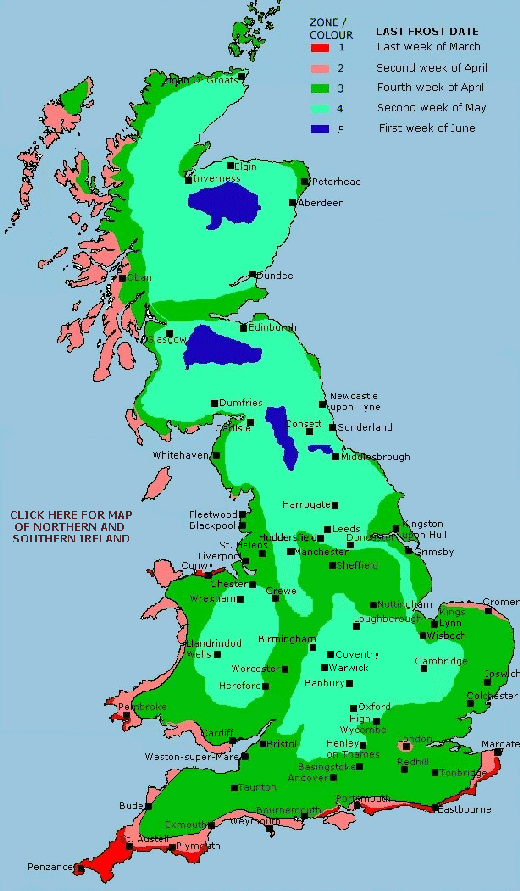CHERRY TREE POLLINATION GROUPS
There are about 300 cultivated varieties of cherry trees in the world but only about 20 are widely grown in the UK. The more modern varieties are mainl self-fertile and will produce an excellent crop of cherries when grown on their own. The majority of the older varieties are self-sterile and will only produce a crop of cherries when another cherry tree is nearby and produces blossom at roughly the same time.
Cherry trees are not as common as apple, plum or pear trees in the UK so it’s not always sensible to rely on neighbouring trees being present to pollinate the one in your garden.
Below is a list of all the common cherry tree varieties grown in the UK and it shows which are self-fertile (will produce a crop on their own) and which are self-sterile (need a pollination partner to crop well). The list is in alphabetic order within the self-fertile / self-sterile classification.
Suitable pollination partners include those in the same pollination group and the pollination group above and below. For instance, Merton Bigarreau is in pollination 3. It can be pollinated by varieties not only in pollination group three but also in the groups 2 and 4.
If you click on any variety name in the list below you will be shown which other varieties will pollinate it and can be pollinated by it.
| VARIETY | Fertility | Pollination Group |
Eat or Cook |
| KORDIA | Self-fertile | 4 | Eat |
| MORELLO | Self-fertile | 4 | Cook |
| LAPINS | Self-fertile | 2 to 3 | Eat |
| SKEENA | Self-fertile | 4 | Eat |
| STELLA | Self-fertile | 4 | Eat |
| SUMMER SUN | Self-fertile | 3 to 4 | Eat |
| SUNBURST | Self-fertile | 4 | Eat |
| SWEETHEART | Self-fertile | 3 to 4 | Eat |
| SYLVIA | Self-fertile | 3 to 4 | Eat |
| NAPOLEON | Self-sterile | 4 to 5 | Eat |
| COLNEY | Self-sterile | 3 to 4 | Eat |
| EARLY RIVERS | Self-sterile | 1 | Eat |
| KNIGHTS EARLY BLACK |
Self-sterile | 2 to 3 | Eat |
| MERTON BIGARREAU |
Self-sterile | 3 | Eat |
| MERTON GLORY |
Self-sterile | 2 | Eat |
| PENNY | Self-sterile | 3 to 4 | Eat |
| VAN | Self-sterile | 3 | Eat |
PROBLEMS WITH CHERRY TREE POLLINATION
Cherry trees produce pollen earlier in the year compared to apple, plum and pear trees and this brings the danger of frost damage which in occasional years can ruin the entire crop. This danger varies throughout the UK depending on local weather conditions.
As a general rule, if you are in zones 1 to 3 (red, pink and darker green) on the UK map below then successful cherry growing is likely in most (but not all) years. if you are in zone 4 (lighter green) then it is also a possibility but you need to accept that the crop is likely to smaller in many years. If the map is not clear, click it to enlarge.
To reduce the risk of frost damaging the blossom of your cherry tree choose a variety which flowers later in the season. Below we list the average dates when blossoming commences for the top cherry trees in the UK. Remember, blossom dates are highly dependent on the weather conditions which differ year by year.
The table below lists the earliest blossoming varieties (most liable to frost damage) first.
| VARIETY | Average Blossom Start Date |
Average Harvest Start Date |
|
| EARLY RIVERS | April week 1 / 2 | June week 4 | |
| MERTON GLORY |
April week 2 | July week 2 | |
| KNIGHTS EARLY BLACK |
April week 2 / 3 | July week 1 | |
| LAPINS / CHEROKEE |
April week 2 / 3 | July week 2 | |
| MERTON BIGARREAU |
April week 3 | July week 2 | |
| VAN | April week 3 | July week 3 | |
| COLNEY | April week 4 | July week 3 | |
| PENNY | April week 4 | July week 3 / 4 | |
| SYLVIA | April week 4 | July week 2 | |
| SUMMER SUN | April week 4 | July week 3 | |
| SWEETHEART | April week 4 | July week 4 | |
| SKEENA | May week 1 | July week 3 | |
| KORDIA | May week 1 | July week 2 | |
| STELLA | May week 1 | July week 3 | |
| SUNBURST | May week 1 | July week 2 / 3 | |
| MORELLO | May week 1 | July week 3 / 4 | |
| NAPOLEON | May week 2 | July week 2 / 3 |
As well as frost affecting the blossom, rain and wind can prevent bees and other pollinating insects from visiting the blossoms and therefore reducing the pollination of both self-sterile and self-fertile varieties.
